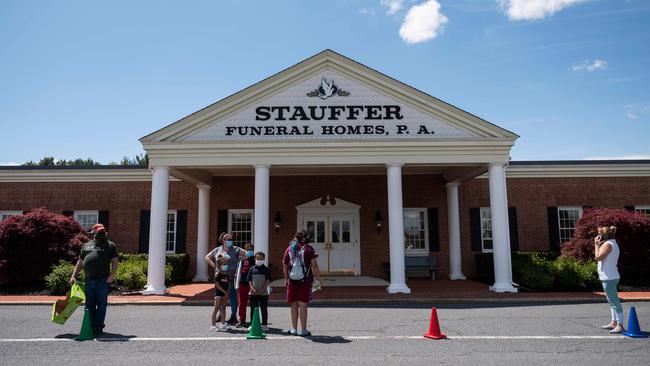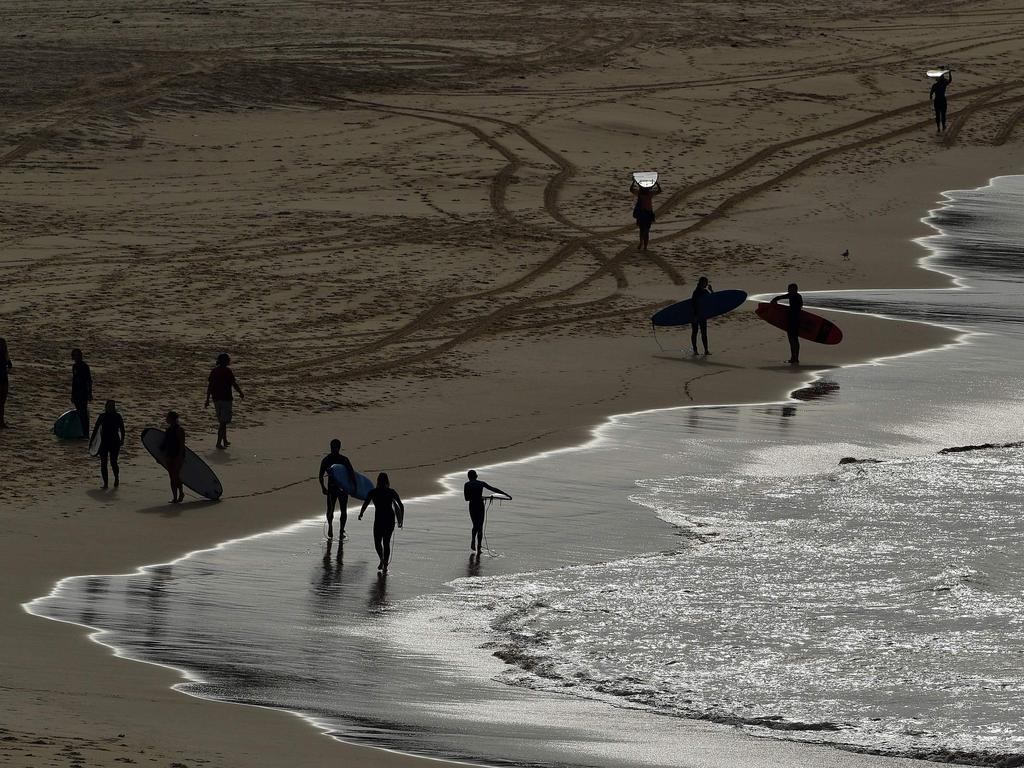Daily US deaths to hit 3000 ‘in weeks’, new model shows
The White House has distanced itself from modelling which predicts the daily death rate from COVID-19 is set to almost double.

More than 3000 Americans will die from coronavirus each day within weeks, almost double the current daily death rate, according to a grim model held by the Trump administration.
However the White House has distanced itself from the government model, by the Federal Emergency Management Agency, saying it was not a projection that had been vetted or presented to the coronavirus taskforce.
“This data is not reflective of any of the modelling done by the task force or data that the task force has analysed,” White House deputy press secretary Judd Deere said.
The internal projection, leaked to the New York Times, comes a day after Donald Trump said it was now likely that up to 100,000 Americans could die, sharply higher than previous estimates of around 65,000.
But with around 25 of the 50 US states tentatively reopening their economies, a move that will fuel further infections, the final US death toll now looks set to be even higher than the revised 100,000 figure cited by the president.
However it is not as high as the initial projections cited by Mr Trump’s coronavirus taskforce of deaths of up to 240,000.
Meanwhile a second model, frequently cited by the White House, forecasts that 134,000 Americans will now die of COVID-19, almost double its previous estimate of 72,433.
The model, by the Institute for Health Metrics and Evaluation, has increased the number of expected deaths because it has factored in the health impact of moves by many US states to reopen their economy.
The IHME said the higher projections reflected the early relaxation of social distancing in some states as well as new virus outbreaks in the Midwest and a slower than expected decline in overall US deaths.
A raft of US states are beginning the first steps to open up their economies including beaches, parks, gyms, retails shops, hair salons and restaurants.
The key economic states of Florida and California are now taking their first steps to reopen.
In Florida, restaurants, retail stores, museums and libraries are now allowed to reopen in most of the state’s counties although with fewer customers at one time.
In California, Governor Gavin Newsom said some retail stores would be allowed to reopen this week.
By the end of this week 42 states will have taken initial steps to reopen their economies.
Mr Trump has left it to state Governors to reopen their states at their own pace depending on the conditions on the ground, with the virus impacting states unevenly and at different times.
The US death toll from the coronavirus is now more than 68,000 and is rising by around 1750 per day.
Despite the high death toll, Mr Trump has been encouraging states to reopen their economies, saying the human suffering and fallout from job losses in the closed economy could not be ignored for much longer.
In the hardest hit state of New York, Governor Andrew Cuomo expressed frustration with the slow decline in the death rate — still more than 200 per day — as well as the number of new cases and hospitalisation.
“We’re on the other side of the mountain … (but) the decline from the mountain is not as steep as the incline,” he said.
State Governors in hard hit states like New York, Michigan, Illinois, New Jersey and Massachusetts are resisting pressure to reopen their economies, saying the virus is still too prevalent to allow any safe relaxation of restrictions.
Public-health experts have criticised some states for opening up their economies before there has been a sustained decline in infection rates.
They warn that in certain states, such as Georgia, there has not been enough testing to assess how prevalent the virus is and therefore how safe it is to reopen stories and ease social distancing.
Many experts believe the reopening of state economies will trigger a second wave of the virus later this year. But more than 25 million people have lost their job as a result of the closure of the national economy and there is also enormous pressure to pressure to kickstart the economy to create new jobs and restore livelihoods.
–
(Cameron Stewart is also US Contributor for Sky News Australia)







To join the conversation, please log in. Don't have an account? Register
Join the conversation, you are commenting as Logout